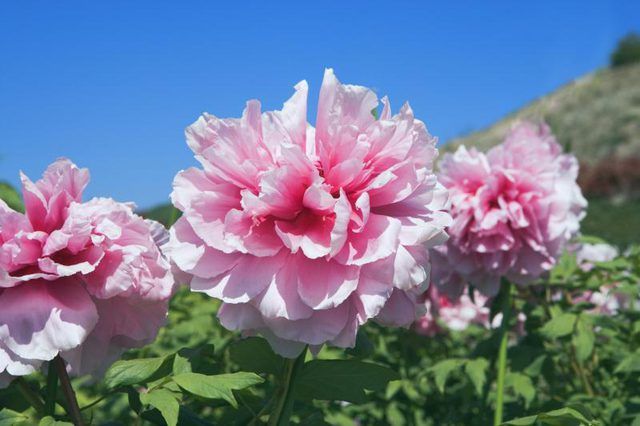Bulbs
Flower Basics
Flower Beds & Specialty Gardens
Flower Garden
Garden Furniture
Garden Gnomes
Garden Seeds
Garden Sheds
Garden Statues
Garden Tools & Supplies
Gardening Basics
Green & Organic
Groundcovers & Vines
Growing Annuals
Growing Basil
Growing Beans
Growing Berries
Growing Blueberries
Growing Cactus
Growing Corn
Growing Cotton
Growing Edibles
Growing Flowers
Growing Garlic
Growing Grapes
Growing Grass
Growing Herbs
Growing Jasmine
Growing Mint
Growing Mushrooms
Orchids
Growing Peanuts
Growing Perennials
Growing Plants
Growing Rosemary
Growing Roses
Growing Strawberries
Growing Sunflowers
Growing Thyme
Growing Tomatoes
Growing Tulips
Growing Vegetables
Herb Basics
Herb Garden
Indoor Growing
Landscaping Basics
Landscaping Patios
Landscaping Plants
Landscaping Shrubs
Landscaping Trees
Landscaping Walks & Pathways
Lawn Basics
Lawn Maintenance
Lawn Mowers
Lawn Ornaments
Lawn Planting
Lawn Tools
Outdoor Growing
Overall Landscape Planning
Pests, Weeds & Problems
Plant Basics
Rock Garden
Rose Garden
Shrubs
Soil
Specialty Gardens
Trees
Vegetable Garden
Yard Maintenance
How to Grow Peonies in Texas
How to Grow Peonies in Texas. The large, showy blooms of peonies tempt many gardeners to include them in a landscape. Peonies (_Paeonia_ spp.) grow native in a wide variety of locations, including meadows and rocky ares. They typically prefer cool weather, but adapt readily to different garden conditions in Texas if properly cared for.

The large, showy blooms of peonies tempt many gardeners to include them in a landscape. Peonies (Paeonia spp.) grow native in a wide variety of locations, including meadows and rocky ares. They typically prefer cool weather, but adapt readily to different garden conditions in Texas if properly cared for.
Best Locations
Different peony species require different growing conditions. Herbaceous garden peonies (Paeonia lactiflora) need at least six hours of full sun a day to bloom. In warm locations, afternoon sun helps prevent the flowers from fading. Tree peonies (Paeonia suffruticosa) prefer dappled shade. They do need part sun conditions to bloom, but must be protected from afternoon sunlight. Tree peonies and garden peonies also grow in different hardiness zones. Texas covers U.S. Department of Agriculture plant hardiness zones 6 through 9. Tree peonies are hardy in USDA zones 5 through 9, and can be grown throughout the state. Garden peonies are hardy in USDA zones 3 through 8, and will not grow in the southern plains and parts of the Gulf Coast.
Planting Tips
Peonies need deep, fertile soil that is well-drained but stays moist. In parts of Texas where soils are either dry and sandy or hard clay, amend the soil with well-rotted manure, compost or finely ground pine bark before planting. To do this, spread the organic matter 1 to 2 inches thick across the soil and then work it in to a depth of 12 inches. Garden peonies are typically sold bare-root. Dig a hole 12 to 18 inches deep and wide, then mound soil up in the middle of the hole to make a cone shape. Spread the roots out over the cone so that the swollen pink or reddish buds at the top of the plant are no more than 1 inch below the soil surface once the roots are covered. Plant tree peonies the same way, making sure the graft union is an inch below ground level. Space both types of peonies 3 to 4 feet apart. Both garden and tree peonies do best when planted in late summer or early fall, which gives them time to develop a strong root system before winter sets in without the stress of hot weather.
Fertilizer Needs
Fertilizing at planting time is optional. If you choose to fertilize, add 1/4 to 1/2 cup of dry, granular fertilizer with an N-P-K ratio of 10-10-10 to the bottom of the hole for each plant. It should not touch plant roots, so place it before making the cone of soil. You can also add 1/2 cup of bone meal or superphosphate at the same time. On a yearly basis, fertilize peonies with a slow-release, low-nitrogen fertilizer that has an N-P-K ratio of 5-10-5 or 10-10-10. In the spring, when stems are 2 or 3 inches high, apply this fertilizer at a rate of 2 to 3 pounds per 100 square feet, or 1/2 cup per plant. Don't let the fertilizer touch plant stems, and be sure to follow label directions.
Watering Peonies
Water peonies thoroughly after planting, then often enough to keep the soil moist but not soggy for the first year. It is better to water deeply rather than frequently, since deep watering encourages deep root systems. If watering causes run-off, give the water time to soak into the soil and them come back and finish watering. Once peonies are established, they need about an inch of water per week during the growing season. In dry areas of Texas, water peonies every week if there has been less than an inch of rain. If plants start to wilt during hot Texas summers, you can water more than an inch a week, or enough to keep the soil moist. To help cool the roots and retain moisture, apply 2 to 3 inches of an organic mulch in the spring, making sure it doesn't touch the crown of the plant.